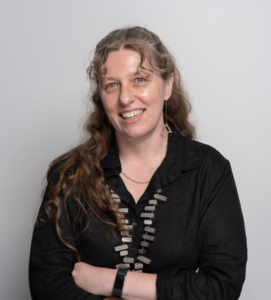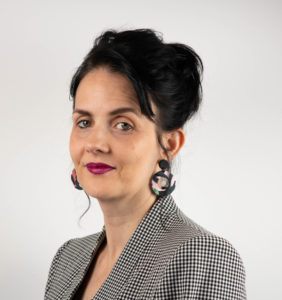South Australia's decades long commitment to improving health outcomes and supporting patient recovery through community access to the arts in hospitals must be reinvigorated with the introduction of fresh policies and initiatives, according to a new report by Flinders University.
Funded by the Arts and Health Alliance, the pioneering new report is informing fresh opportunities for arts and health collaboration as the government seeks to fund programs helping with the state's recovery from Covid-19, wellbeing in Indigenous communities and in promoting ageing well.

Flinders University researchers and the report's authors, Dr Tully Barnett, Director of Assemblage Centre for Creative Arts in the College of Humanities, Arts & Social Sciences, Professor Joanne Arciuli, Dean (Research) in the College of Nursing & Health Sciences, and writer and researcher Dr Alex Cothren conducted interviews with 47 arts and health stakeholders who have contributed to the development of the field in South Australia.
Publishing their findings from interviews in Telling the Story of Arts and Health in South Australia, the researchers asked participants about their past experiences with arts and health, the present challenges and opportunities for the field, and how best to advance this work in the future.
"Arts and health is broadly defined as using arts practice to deliver health outcomes, be they specifically targeted interventions or general wellbeing benefits. We hope this first of its kind SA report will inform current and future work, allow newcomers to arts and health to understand some of the history and help us collectively look for the strengths and challenges in productive ways," says report author Dr Tully Barnett.
"These recommendations form an important platform for building a new era and agenda for the future of arts and health in South Australia and beyond. It is an exciting time for arts and health right now."
The findings show that South Australia has a long, internationally significant history of arts and health work with a strong platform to build future success stories on, but this will require continuing engagement between on-the-ground arts and health workers, as well as the recognition and support of those in key leadership positions.

Examples of successful programs include bringing artists to work in hospitals with the aim of engaging with staff, patients and visitors, thereby educating people and showcasing the benefits of interaction with arts and health.
Dr Cothren led the interview process, collecting recommendations from interviewees on how to advance the future of arts and health projects, policy and investment. They have collated and grouped these recommendations into five key areas: Policy, Research, Communication, Education and Connection.
Recommendations include collaborating with the state government and aligning with their focus on wellbeing to seek investment for arts and health projects, designing and funding arts and health initiatives that can support the Royal Commission into Aged Care's recommendations on alleviating social isolation in older people and positioning the arts and health as a vital part of the post-COVID recovery, for both physical health and mental wellbeing.
Professor Joanne Arciuli, Dean (Research) in the College of Nursing & Health Sciences at Flinders University, says the successful implementation of these recommendations could be an important step in bringing together key decision-makers to witness the power and efficacy of the arts.
"This report's recommendations offer some prospective methods to mobilise the knowledge of the past for the future benefit of the field, as well as its arts and health researchers, practitioners and end-users. There is a lot of work to be done but the report shows the capacity to build upon the significant and ground-breaking work of visionaries and practitioners from both the arts and the health sectors," says Professor Arciuli.
"We have a responsibility to carry on the legacy of the arts and health work that has already been done and to shine a light for new projects, evidence-bases, and ways of valuing the work of arts and health for the benefit of all involved.
"Of course, the future of arts and health is in the hands of the next generation of artists and health professionals. We hope the report inspires them to seek cross-sector collaboration, and to feel confident that arts and health is a proven, well established field worthy of their time and energy."
Background information about arts and health in SA
The establishment of the Flinders Medical Centre's Arts in Health program in the late 1990s provided a first major step for the arts into health settings, and the program remains a world-leader today.
An historic 2008 partnership between SA Health and Arts SA influenced the integration of arts and health into the build of the new Royal Adelaide Hospital, including the opening of the Centre for Creative Health in 2017, alongside the launch of the Arts in Health program at Women's and Children's Hospital in 2010. This has meant that arts and health now have a presence in the state's three major hospitals.
The team behind the partnership commitment then brought their vision to the national stage, developing-alongside interstate partners-the National Arts and Health Framework. While there have been notable dips and rises along the way-caused largely by political fluctuation-underneath it all has been a consistent grassroots community of tireless art and health workers, as well as grateful members of the public who have benefitted from their work.






